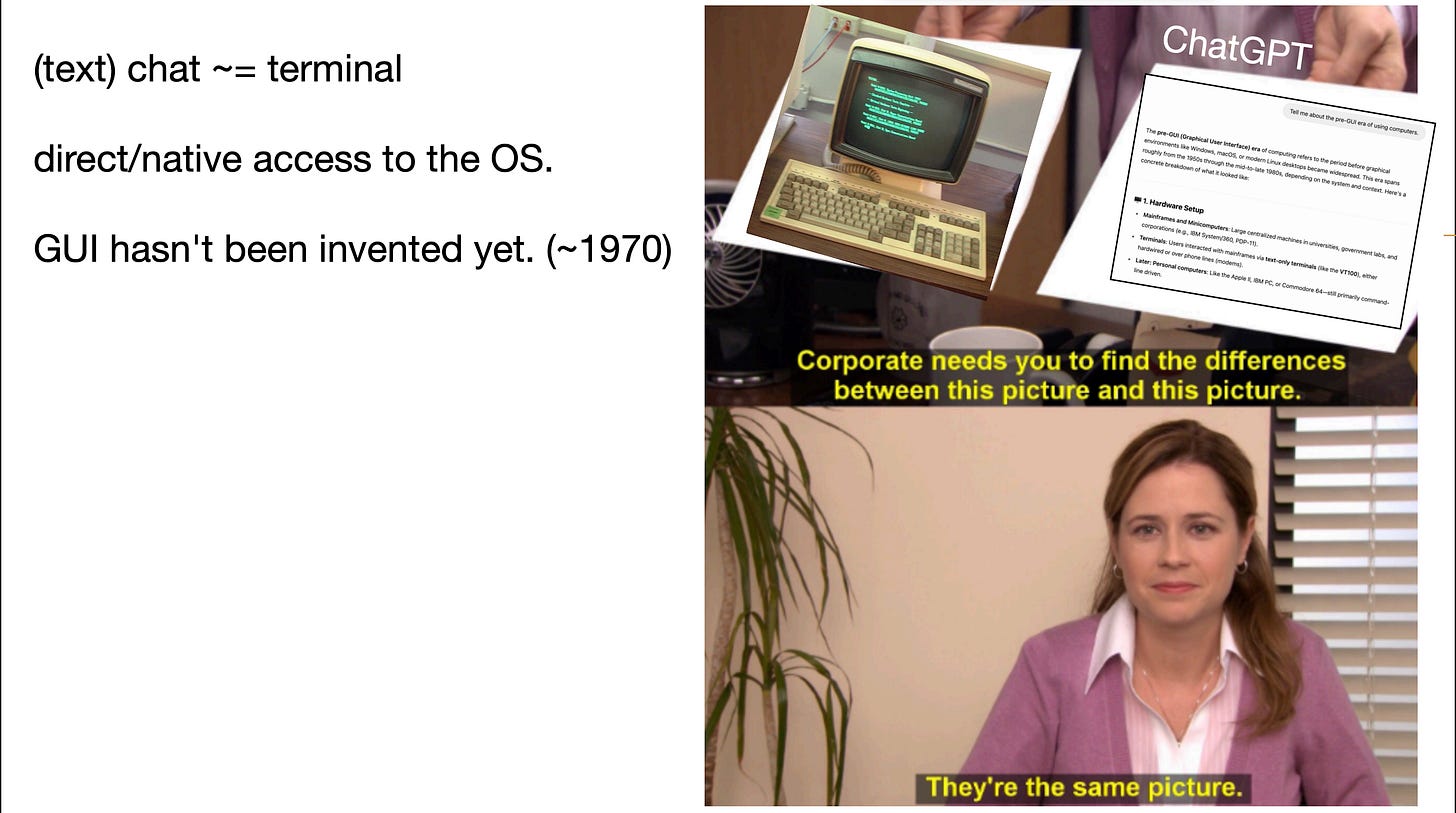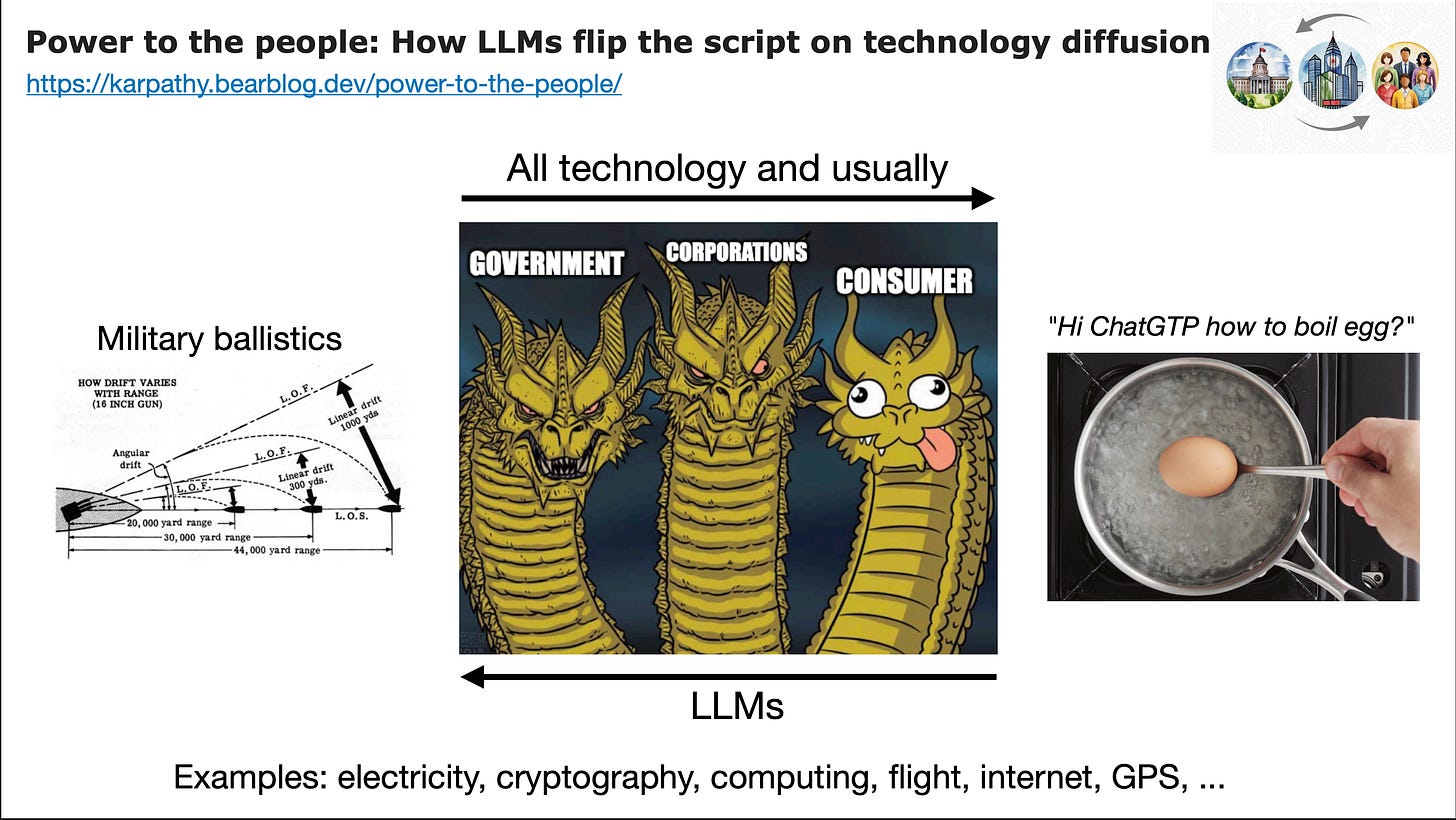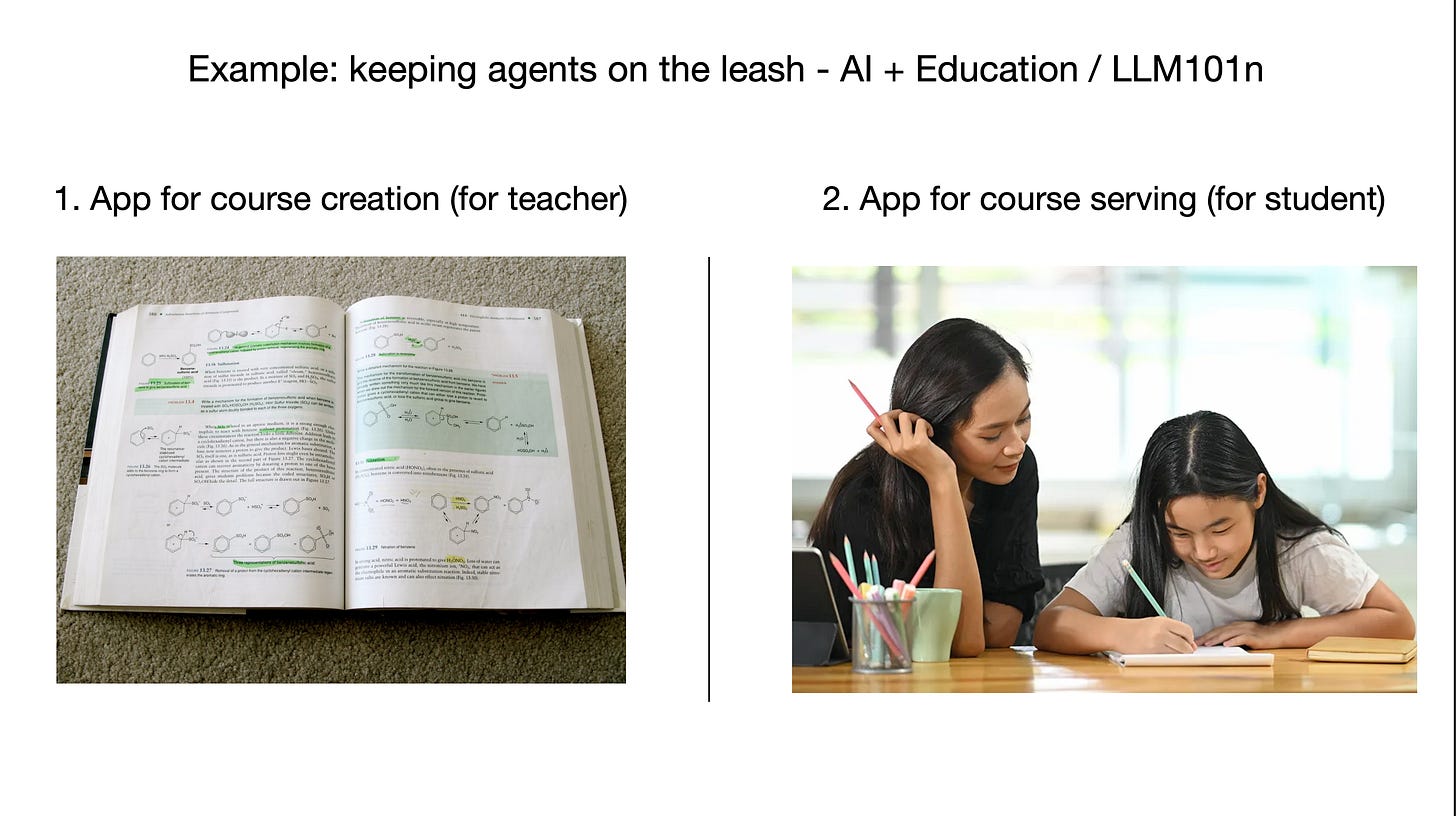AI Ate Software: What Product Builders Need to Know
On Friday, YCombinator posted Andrej Karpathy's keynote, "Software Is Changing (Again)" - here's what product builders need to know.
On Friday, YCombinator posted Andrej Karpathy's keynote, "Software Is Changing (Again)". Andrej formerly led the computer vision team for Tesla’s Autopilot, worked on GPT-4 at OpenAI, founded Eureka Labs, and coined the term “vibe coding” back in February. Karpathy’s insights are basically required reading at this point. Here’s what product builders need to know:
1) English is the new programming language.
Karpathy’s first point was that LLMs are a new kind of computer and you program them in English.
In my view, this means 2 things for builders:
Lower barriers to creation: The ability to "program in English" democratizes product creation. The barrier to creation is lowered, meaning anyone without traditional coding experience can begin to code products. Say hello to “jack of all trades” PMs creating their first prototypes, skipping the design and PRD steps altogether, straight to working code. If everyone can create easily, the special sauce becomes crystallizing on a vision and leading with clarity on the “why”.
Product engineers are born: Vibe coding profoundly impacts product manager roles. Consider Michael Luo, a product manager from Stripe, who vibe coded a free Docusign alternative in two days over the weekend. Product managers will expand their scope, moving closer to "product engineers" responsible for the product creation process: from ideation, to discovery, to working coded prototype. On the other hand, old-paradigm tasks like writing detailed PRDs or endless user stories in Jira will probably only be done post-delivery for documentation purposes, and to feed LLMs to build on top of existing features.
2) Coding is the easiest part of the process.
Karpathy shared his experience building a vibe-coded app. The punch line? Coding and running the app locally was actually the easiest part of the build. The hard part was installing payments, back-end, making the app secure, hosting, and deploying to production.
I see a world where product managers, nay “product engineers”, handle product development from ideation to local code generation. Then they hand-off the application to experienced software engineers for production-readiness processes – handling tasks from responsive design, localization, payments, infrastructure, unit and automation testing, and back-end, and DevOps, SecOps.
3) AI apps are like terminals in the 1960s
Karpathy noted that when you interact with an app like Chat GPT, it feels like a terminal interface to communicate with an operating system, without a GUI yet. We're in the very early days of this revolution, with standard UX patterns just beginning to emerge (think of Cursor or Perplexity as leading the UX frontier in what’s to come). The current chat interface isn’t suitable for information-dense tasks like booking travel, navigation, scheduling, or comparing products. This presents an incredible opportunity for product builders to define the operating system itself and fundamentally reshape how we interact with AI products.
On a side note, Perplexity's agentic shopping release this week is a step towards a more usable interface.
4) Use cases are not that groundbreaking, yet.
Historically, Andrej points out that huge technological breakthroughs like satellites, computing, or GPS were adopted by governments and large corporations first, and then dispersed to consumers. With AI, he noted, consumers and small startups are leading the charge, often for fairly superfluous use cases like 'how do I boil an egg'. This, to me, implies that the most powerful, transformative applications are still to be discovered once larger entities fully engage. As builders, we have the opportunity to be at the forefront of uncovering these impactful use cases. We’re at a moment that’s similar to the early internet's "mind-blowing" use case of sharing cat photos before social networks evolved into what they are today.
5) Where’s your autonomy slider?
Karpathy emphasizes the concept of "partially autonomous apps," illustrating it with examples like Tesla's Autopilot and the Cursor coding tool, where users can control the level of AI-involvement. His core idea is that most applications will likely feature an "autonomy slider," allowing users to dictate the level of AI involvement. Product builders should proactively consider how to incorporate an autonomy slider into their offerings.
6) Keeping AI “on a leash” means even more products to build
Karpathy's discussion on "keeping AI on a leash" also has some interesting implications for product builders. He gave the example of trying to learn physics from ChatGPT, implying that it might "go off the rails" and struggle with prioritization and what to teach you first. To solve for this, Andrej scenarios where use cases might be broken into separate apps: one app for teachers to create courses and another app for students to consume them, each designed to work within the constraints of AI's current capabilities. This means that instead of a single "super app" like ChatGPT trying to do everything, there are significant opportunities to build applications for micro use cases to keep AI focused and "on the rails".
7) Is your app LLM-accessible? A new Accessibility Frontier
Andrej emphasized the need to design products not just for human users and computer/mobile GUIs, but for AI agents to interact with products programmatically. He pointed to examples like robots.txt files as a proposed standard method to help LLMs understand the context of a website (see also: llms.txt), and Stripe's early adoption of Model Context Protocol.
Building your app for agents to use represents a new form of accessibility. As AI agents become increasingly sophisticated, they will be significant consumers of not only digital information, but digital products. Products that facilitate seamless interaction with these agents, much like APIs enable communication between different software systems, will be crucial.
💬 How do you see your role as a product builder evolving in this new landscape?
P.S. Love diving deep into the future of product? Support my work by shopping the collection at Post MVP.










